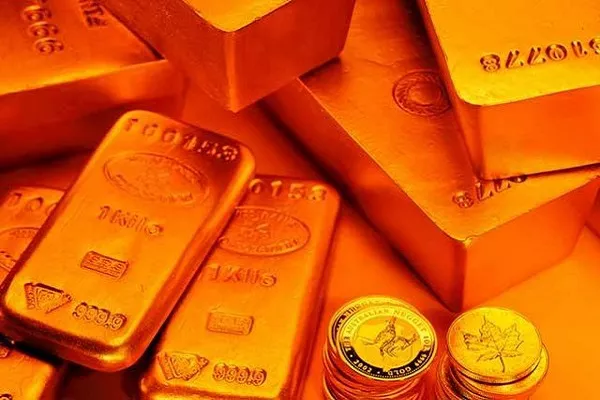Gold has long been considered a valuable asset and a safe haven for investors during times of economic uncertainty. The “spot price” of gold is a term that frequently arises in discussions about the gold market, but what exactly does it mean? In this article, we will explore the intricacies of the spot price of gold, its determination, factors influencing it, and its implications for investors.
What is the Spot Price of Gold?
The spot price of gold refers to the current market price at which gold can be bought or sold for immediate delivery. Unlike futures contracts, which lock in a price for delivery at a future date, the spot price reflects the real-time value of gold based on supply and demand dynamics.
The spot price is quoted in various currencies, with the most common being U.S. dollars per ounce. This price serves as a benchmark for trading gold in various forms, including physical bullion, coins, and gold-backed financial products such as ETFs (Exchange-Traded Funds).
How is the Spot Price Determined?
The spot price of gold is determined by a variety of factors, reflecting the underlying economics of the global gold market. Here are the key components influencing the spot price:
1. Market Demand and Supply
The fundamental principle of supply and demand plays a critical role in determining the spot price of gold. Increased demand for gold, driven by factors such as jewelry production, investment interest, and central bank purchases, can lead to higher prices. Conversely, an oversupply or reduced demand can push prices down.
2. Geopolitical Stability
Gold is often seen as a safe haven asset, particularly during times of geopolitical instability. When tensions rise—be it through war, economic sanctions, or political upheaval—investors tend to flock to gold, driving up its price. Conversely, periods of relative stability can lead to decreased demand and lower prices.
3. Interest Rates
Interest rates significantly impact the opportunity cost of holding gold. When interest rates are low, the opportunity cost of holding non-yielding assets like gold decreases, making gold more attractive to investors. Conversely, higher interest rates can lead to lower gold prices as investors may prefer interest-bearing assets.
4. Inflation
Gold is traditionally viewed as a hedge against inflation. When inflation rises, the purchasing power of fiat currencies declines, prompting investors to turn to gold as a store of value. This increased demand can elevate the spot price of gold.
5. Currency Fluctuations
Since gold is typically priced in U.S. dollars, fluctuations in the value of the dollar can affect gold prices. A weaker dollar makes gold cheaper for holders of other currencies, potentially boosting demand and driving up prices. Conversely, a strong dollar can have the opposite effect.
The Role of Gold Exchanges
Gold trading typically occurs on commodity exchanges where buyers and sellers transact at the prevailing spot price. Major exchanges such as the London Bullion Market Association (LBMA) and the New York Mercantile Exchange (NYMEX) play pivotal roles in price discovery.
In London, for instance, the LBMA sets the gold benchmark price twice daily, which is widely regarded as the gold spot price. This benchmark is established through a process involving major market participants, ensuring that it reflects real-time supply and demand conditions.
Spot Price vs. Other Gold Prices
It’s essential to differentiate the spot price from other gold prices, including futures prices and premiums on physical gold products.
- Futures Price: The futures price reflects the agreed-upon price for gold to be delivered at a specified date in the future. Futures contracts can lead to price discrepancies between the spot and futures markets due to expectations of future supply and demand conditions.
- Premiums on Physical Gold: When purchasing physical gold (bullion, coins), buyers often pay a premium over the spot price. This premium accounts for production, distribution, and dealer margins. The premium can vary based on the type of gold product and market conditions.
Implications for Investors
Understanding the spot price of gold is crucial for investors looking to incorporate gold into their portfolios. Here are some implications for investment strategies:
1. Timing Purchases
Investors need to be mindful of the spot price when making purchases. Timing can significantly impact the cost of acquiring gold. Keeping an eye on market trends, geopolitical events, and economic indicators can help investors make informed decisions about when to buy.
2. Diversification Strategy
Gold is often included in diversified investment portfolios as a hedge against market volatility and inflation. Investors should consider how changes in the spot price may influence their overall asset allocation and risk management strategies.
3. Long-Term vs. Short-Term Investing
Investors must also consider their investment horizon. While short-term fluctuations in the spot price can present trading opportunities, long-term investors may focus more on the overall trends and fundamentals driving gold prices rather than short-term volatility.
See Also How Much is 1 Gram of Gold?
Conclusion
The spot price of gold serves as a vital barometer for the health of the gold market and offers insights into broader economic conditions. By understanding how the spot price is determined and the factors that influence it, investors can make more informed decisions regarding gold investments.
In a world characterized by economic uncertainty, geopolitical tensions, and inflationary pressures, the allure of gold as a stable and reliable asset endures. Whether for hedging, speculation, or long-term wealth preservation, an understanding of the spot price of gold is essential for any investor interested in this timeless commodity.


